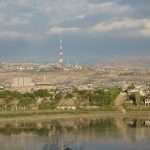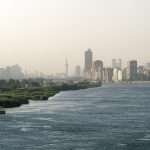Quick Answer
Which lake is the second deepest? Lake Tanganyika in East Africa is the second deepest lake in the world, reaching a maximum depth of approximately 4,820 feet (1,470 m).
Meet Lake Tanganyika
Lake Tanganyika stretches roughly 418 miles (673 km) north–south along the western branch of the East African Rift, bordering Tanzania, the Democratic Republic of the Congo (DRC), Burundi, and Zambia. It covers about 12,700 sq mi (32,900 km²)—making it the world’s longest freshwater lake by length—and contains an estimated 4,500 cu mi (18,750 km³) of water, accounting for almost 16% of the planet’s available fresh water. Settlements such as Kigoma (Tanzania) and Bujumbura (Burundi) hug its shores, where fishing and transport vitalize local economies.
Depth & Geological Origins
Lake Tanganyika’s dramatic depth is a product of tectonic forces. Sitting in the Albertine Rift, the lake basin formed as the African Plate pulled apart during the Miocene epoch, roughly 10–12 million years ago. Its three sub-basins emerged at staggered intervals—central (9–12 Mya), northern (7–8 Mya), and southern (2–4 Mya)—creating deep troughs that now plunge below sea level.
| Statistic | Value |
|---|---|
| Maximum Depth | 1,470 m (4,820 ft) |
| Average Depth | 570 m (1,870 ft) |
| Surface Area | 32,900 km² (12,700 sq mi) |
Table: Key Depth and Area Metrics of Lake Tanganyika
Unique Ecosystem & Species
Tanganyika’s ancient, stratified waters support some of the world’s most diverse and endemic aquatic life. Over 250 cichlid species have been formally described, with genetic studies suggesting as many as 350 distinct varieties—approximately 98% of which are found nowhere else on Earth. Beyond cichlids, the lake harbors 79% endemism among its 287 described fish species, including unique catfish, spiny eels, and the iconic storm’s water cobra along rocky shorelines. This biodiversity hotspot also faces threats from overfishing, pollution, and climate-driven warming linked to productivity declines.
Cultural & Historical Significance
Local languages and lore mirror Tanganyika’s mysteries. In Kiswahili, “Ku Tanganya” means “to mix,” referring to the lake’s convergence of basins and waterways. A Burundian legend tells of Tanganyika as a “bottomless well” stocked with fish for one fortunate couple—so deep that villagers once claimed they could tread from shore to Bangwe Island when waters receded. European explorers like Burton and Speke first mapped its shores in the 19th century, while the British Royal Navy’s famed HMS Mimi and HMS Toutou campaign during World War I added modern chapters to its storied past.
Visiting & Research Tips
- Best Time to Visit: Dry season from June to October for clear skies and calmer waters; November to April brings lush foliage and bird migrations but higher humidity.
- Safety & Health: Malaria prophylaxis is essential; bring water-purification tablets and high-SPF sunscreen. Shorelines may be remote, so arrange guided excursions through reputable operators.
- Gear Recommendations: Pack sturdy hiking boots, snorkeling gear for rocky outcrops, and a waterproof camera for dramatic depth views. Include lightweight layers for cooler mornings near the northern shore.
- Research Access: Academic collaborations often center in Kigoma, Tanzania, and Kalemie, DRC. Contact local universities or NGOs like the Lake Tanganyika Biodiversity Project for permits and field support.
FAQ
How deep is Lake Tanganyika compared to Lake Baikal?
Lake Tanganyika reaches about 4,820 ft (1,470 m), making it second to Lake Baikal’s 5,387 ft (1,642 m) depth.
What makes Tanganyika’s ecosystem unique?
Its age and stability have allowed unparalleled adaptive radiation, producing the highest morphological diversity among African Great Lakes’ cichlids.
Can you swim across Lake Tanganyika?
No—the lake’s length (418 mi/673 km), unpredictable currents, and deep trenches make swimming impractical and dangerous.
Are there conservation efforts in place?
Yes—regional programs under UNESCO’s Man and the Biosphere initiative monitor biodiversity, and NGOs partner with local communities to promote sustainable fishing.
Is Lake Tanganyika safe for scuba diving?
Possible in designated areas, but limited infrastructure and strong thermoclines require professional guidance and specialized equipment.
What Did We Learn Today?
- Lake Tanganyika is the second deepest lake globally at 4,820 ft.
- Its tectonic rift origin created three deep basins over millions of years.
- Over 250 cichlid species thrive, with endemism near 98%.
- Local legends speak of a “bottomless well”, linking language and lore to its depth.
- Travelers should plan for the dry season, follow health precautions, and hire professional guides.





